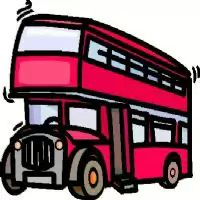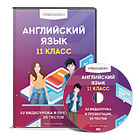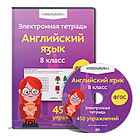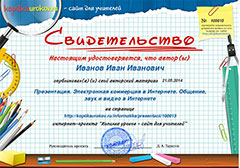Lesson plan
| Long-term plan unit: | School: | |||||||
| Date: | Teacher name: | |||||||
| CLASS: 2 | Number present: | absent: | ||||||
| Theme of the lesson: Types of vehicle | ||||||||
| Learning objectives(s) that this lesson is contributing to | 2.L1 recognise short basic instructions for a limited range of classroom routines spoken slowly and distinctly 2.R3 recognise and identify some familiar sight words from local environment 2.W2 form lower and upper case letters of regular size and shape | |||||||
| Lesson objectives | Learners will be able to: | |||||||
| ||||||||
| Success criteria | Learners have met this learning objective 2.L1, if they can recognize short basic instructions | |||||||
| Value links | Education throughout life | |||||||
| Cross curricular links | The world around us | |||||||
| ICT skills | Smart board | |||||||
| Previous learning | Directions | |||||||
| Plan | ||||||||
| Planned timings | Planned activities (replace the notes below with your planned activities) | Resources | ||||||
| Beginning
| ORGANIZATIONAL MOMENT - Good morning boys and girls! I am glad to see you. Let's begin our lesson! Listen to the song “What Do You See?” Look at the screen. What do you see here? P1-I see a car. P2- I see a bus, a plane, a ship etc. -What is the topic of our lesson? How do you think? P3-Different kinds of transport. - OK. You are right. Today we’ll have a talk about different kinds of transport. PHONETIC DRILLS Teacher: Look at the whiteboard, listen and repeat, please. [ei] [ᴧ] [i] plane luggage ship train bus ticket stay Bus stop miss Teacher: Let’s practice our tongue and try to learn the poem. And now let’s try to read it. Take a bus or take a train, Take a boat or take a plane, Take a taxi, take a car, Maybe near or maybe far, Take a rocket to the moon, But be sure to come back soon. Teacher: How many types of vehicle can you find in this poem? | What Do You See? Song https://www.youtube. com/watch?v= SWSbejC47hk | ||||||
| Middle
| REVISION 1. Teacher: I want you to answer some questions: - Do you like to travel? - Do you like to travel by sea (by plane, by train)? - Do you like to travel in summer? 2. Teacher: Now let’s play a game «Music box”. Children listen to music and pass each other a box with word cards of transport. When the music stops the children take out pieces of paper with the words from a box and call them in English. 3. Teacher: Look at this task. Fill in the missing letter. Pl_ne 4. Teacher: Now let’s play a game “chain word” Find new words and write down them. TRUCKJETTRAINBUSCARSCOOTERBOAT YACHTHELICOPTER BREAK. Teacher: It’s time to have a rest. I want you to stand up and do our exercises. Up and Down Up and down, up and down Clap your hands and turn around. Hands up clap clap clap Hands down shake shake shake Hands on hip jump jump jump Hop hop hop stop stand still. Good sit down please. DEMONSTRATION Learners are given a worksheet with vehicles that typically have names on: taxi school bus police ice-cream ambulance circus etc. Learners complete missing letters. PRACTICE Pupils practice reading and writing.
yacht - truck - boat - plane -train - bus - jet - bicycle - motorbike 1. This vehicle has wings and starts with p. It is a _____________ 2. This word rhymes with far. It is a _____________ 3. A school ______is yellow. 4. In British English it is called lorry. In American English it is _________. 5. This vehicle travels on tracks. It is a __________________ 6. Another word for motorcycle is _____________ 7. This word rhymes with float. It is a ____________ 8. This vehicle has two wheels. It is a _________________ 9. A ______________is a very fancy ship. 10. This vehicle flies very fast. It is a __________________
1. It has got two wings. 2. It hasn't got wheels. It has got two sails. 3. It has got four wheels. It is yellow. 4. It has got four wheels. It is blue. 5. It hasn't got wings. It has got four wheels. It is red. 6. It has got two wheels. 7. Which transport is missing?
FORMATIVE ASSESSMENT Learners listen to instructions and colour the images of the vehicles. e.g. Can you see the ambulance? Colour the cross on the door red. | Worksheets Short presentation on types of vehicle http://www.k-3teacherresources. com/transport-theme.html | ||||||
| End
|
Teacher: Well what did we do at our lesson? Can you read? Can you write? Can you listen? Show your smiles.
Give the home task Learn the words Children sing a Good bye song | Good bye song https://www.youtube. com/watch?v= Xcws7UWWDEs | ||||||
| Additional information | ||||||||
| Differentiation – how do you plan to give more support? How do you plan to challenge the more able learners? | Assessment – how are you planning to check learners’ learning? |
| ||||||
|
|
| ||||||
| Reflection Were the lesson objectives/learning objectives realistic? What did the learners learn today? What was the learning atmosphere like? Did my planned differentiation work well? Did I stick to timings? What changes did I make from my plan and why? | Use the space below to reflect on your lesson. Answer the most relevant questions from the box on the left about your lesson. | |||||||
| Summary evaluation What two things went really well (consider both teaching and learning)? 1: 2: What two things would have improved the lesson (consider both teaching and learning)? 1: 2: What have I learned from this lesson about the class or individuals that will inform my next lesson? | ||||||||

























